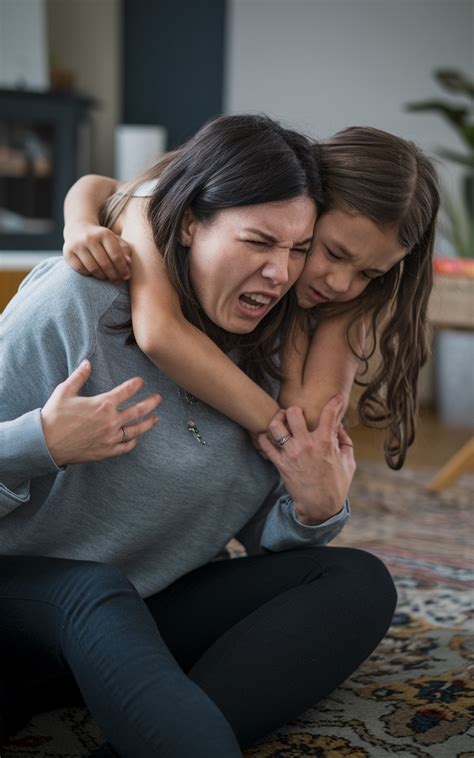
A rescued dog’s heartwarming transformation, mirroring its owner’s escape from an abusive relationship, is captivating audiences online, showcasing the powerful bond between humans and animals and the healing potential of safe environments.
A video documenting the dog’s journey, posted by TikTok user @BaileyBaker0315, shows the stark contrast between the animal’s fearful demeanor in its previous environment and its current joyful state, thriving in a secure and loving home. The owner attributes the dog’s positive change to the stability and peace achieved after leaving the abusive situation, emphasizing how intertwined their well-being became. The dog, initially exhibiting signs of anxiety and distress, now displays a playful and affectionate personality, highlighting the profound impact of domestic violence on both humans and pets. The viral video has sparked widespread conversation about the importance of recognizing and addressing the needs of animals in abusive households, and the crucial role pets play in providing emotional support to survivors.
Bailey Baker, the TikTok user and owner, shared the video to illustrate the positive change in her dog since she left an abusive relationship. The video quickly gained traction, resonating with many viewers who have experienced similar situations or witnessed the effects of trauma on animals. Baker noted that the dog’s behavior was initially characterized by fear and nervousness, reflecting the tense atmosphere of the abusive environment. “She was so scared all the time. She wouldn’t play. She wouldn’t do anything,” Baker explained in one of her follow-up videos. “She was always on edge.” This constant state of alert and anxiety is a common symptom in animals exposed to domestic violence, as they become hyper-aware of potential threats and develop coping mechanisms to survive in unpredictable and dangerous conditions.
The transformation documented in the video is not only heartwarming but also a powerful testament to the resilience of animals and their capacity for healing. After Baker escaped the abusive relationship and created a safe and stable home for herself and her dog, the animal began to exhibit a remarkable change in behavior. The dog, now free from the constant fear and stress, started to display a playful and affectionate personality. The video captures the dog engaging in activities that were previously unthinkable, such as playing with toys, cuddling with Baker, and confidently exploring its surroundings. This transformation underscores the critical role that safe and supportive environments play in the recovery process for both humans and animals.
Experts in animal behavior and welfare emphasize that animals exposed to domestic violence often suffer significant emotional and psychological trauma. They may witness or experience physical abuse, neglect, or threats, leading to a range of behavioral problems, including anxiety, aggression, fearfulness, and withdrawal. These animals may also develop learned helplessness, a condition in which they believe they have no control over their environment and become passive and unresponsive. Recognizing the signs of abuse in animals and providing them with appropriate support is essential for their well-being and recovery.
Organizations dedicated to assisting domestic violence survivors often highlight the interconnectedness of human and animal welfare. Many survivors are reluctant to leave abusive situations because they fear for the safety of their pets, who may be threatened or harmed by the abuser. In some cases, abusers may intentionally harm or threaten animals as a means of controlling and intimidating their partners. Recognizing this dynamic, many domestic violence shelters and support services are expanding their programs to include assistance for pets, such as providing temporary shelter, veterinary care, and pet food. This support enables survivors to leave abusive situations without having to abandon their beloved animals, ensuring the safety and well-being of both.
The American Society for the Prevention of Cruelty to Animals (ASPCA) estimates that as many as 71% of women entering domestic violence shelters report that their abuser had also threatened, injured, or killed a family pet. This statistic underscores the pervasive nature of animal abuse in domestic violence situations and the urgent need for intervention and support. The ASPCA and other animal welfare organizations work to raise awareness about this issue, provide resources for survivors and their pets, and advocate for policies that protect animals from abuse.
The viral video of Baker and her dog has sparked a broader conversation about the importance of recognizing and addressing the needs of animals in abusive households. Many viewers have shared their own stories of how pets have provided them with emotional support during difficult times, highlighting the powerful bond between humans and animals and the healing potential of these relationships. The video has also prompted discussions about the need for increased awareness and resources to support both human and animal victims of domestic violence.
The impact of domestic violence on pets can be profound and long-lasting. Animals exposed to abuse may develop a range of behavioral and emotional problems that require specialized care and treatment. Veterinary behaviorists and trainers can play a crucial role in helping these animals recover from trauma by providing behavior modification therapy, medication, and other interventions. Creating a safe and stable environment, providing consistent care and attention, and building trust are essential components of the recovery process.
Moreover, the story emphasizes the critical role that pets play in the lives of domestic violence survivors. For many survivors, pets are not just animals; they are cherished members of the family who provide unconditional love, companionship, and emotional support. Pets can offer a sense of normalcy and stability during times of chaos and uncertainty, and they can serve as a source of comfort and strength when survivors feel isolated and alone. The bond between humans and animals can be particularly powerful in the context of domestic violence, as pets can provide a sense of safety and security that may be lacking in other relationships.
The video shared by Baker serves as a powerful reminder of the interconnectedness of human and animal well-being. It demonstrates that when humans are able to create safe and supportive environments for themselves, they are also able to create better lives for their animals. The story of Baker and her dog is a testament to the resilience of both humans and animals, and it offers hope and inspiration to others who are struggling with the effects of domestic violence.
Furthermore, the outpouring of support and positive comments on Baker’s video underscores the growing awareness and concern about animal welfare issues. Many viewers expressed their admiration for Baker’s courage in leaving the abusive relationship and creating a better life for herself and her dog. They also shared their own stories of how pets have helped them through difficult times, highlighting the powerful role that animals play in human lives.
The viral video has also prompted discussions about the need for more resources and support for domestic violence survivors and their pets. Many viewers have called for increased funding for domestic violence shelters and programs that provide assistance to pets, such as temporary housing, veterinary care, and pet food. They have also advocated for stronger laws to protect animals from abuse and neglect.
In addition to providing direct support to survivors and their pets, it is also important to address the root causes of domestic violence and animal abuse. This includes educating the public about the signs of abuse, promoting healthy relationships, and challenging societal norms that condone violence and oppression. By working to create a more just and equitable society, we can help prevent domestic violence and animal abuse from occurring in the first place.
The story of Baker and her dog is a powerful example of how individual actions can make a difference. By sharing her story online, Baker has raised awareness about the issue of domestic violence and its impact on animals. She has also inspired others to take action to support survivors and protect animals from abuse. Her video serves as a reminder that even in the face of adversity, it is possible to create a better future for ourselves and for the animals we love.
The video’s virality underscores the power of social media to raise awareness about important social issues. By sharing their stories online, individuals can reach a wide audience and spark conversations that lead to positive change. Social media can also be a valuable tool for connecting survivors with resources and support.
However, it is also important to be mindful of the potential risks of sharing personal information online. Survivors should take steps to protect their privacy and safety, such as using strong passwords, avoiding sharing sensitive information, and being aware of the potential for online harassment.
Despite these risks, the benefits of using social media to raise awareness about domestic violence and animal abuse can outweigh the potential drawbacks. By sharing their stories and connecting with others, survivors can find support, build community, and advocate for change.
Ultimately, the story of Baker and her dog is a story of hope and resilience. It demonstrates that even in the darkest of times, it is possible to find light and create a better future. The video serves as a reminder that we all have a role to play in creating a more just and compassionate world for both humans and animals. The dog’s transformation, from a fearful and anxious creature to a playful and affectionate companion, mirrors Baker’s own journey of healing and empowerment.
The video also serves as a call to action, urging viewers to support domestic violence shelters and animal welfare organizations, to advocate for stronger laws to protect animals, and to be vigilant in recognizing and reporting signs of abuse. By working together, we can create a world where all humans and animals are safe, healthy, and free from violence.
The impact of trauma on animals is a growing area of research, with studies showing that animals can experience post-traumatic stress disorder (PTSD) and other mental health issues as a result of exposure to abuse or neglect. Understanding the effects of trauma on animals is essential for providing them with appropriate care and treatment.
Veterinary behaviorists and trainers are increasingly using trauma-informed approaches to help animals recover from abuse. These approaches focus on creating a safe and supportive environment, building trust, and addressing the underlying emotional and psychological needs of the animal.
In addition to professional help, there are many things that individuals can do to support animals who have experienced trauma. This includes providing them with consistent care and attention, creating a predictable routine, and avoiding situations that may trigger their anxiety.
The story of Baker and her dog highlights the importance of recognizing the interconnectedness of human and animal well-being. When we create safe and supportive environments for ourselves, we are also creating better lives for our animals. By working together to end domestic violence and animal abuse, we can create a more just and compassionate world for all.
The dog’s remarkable recovery is a testament to the power of love, patience, and understanding. It shows that even animals who have experienced significant trauma can heal and thrive when given the opportunity. Baker’s commitment to providing her dog with a safe and loving home has transformed the animal’s life and inspired countless others to take action to support survivors of domestic violence and animal abuse.
The widespread attention that the video has received underscores the growing awareness and concern about animal welfare issues. More and more people are recognizing the importance of treating animals with respect and compassion, and they are willing to take action to protect animals from harm. This growing awareness is a positive sign for the future of animal welfare.
As the video continues to circulate online, it is likely to inspire even more people to get involved in the fight against domestic violence and animal abuse. By sharing her story, Baker has created a ripple effect that will continue to impact lives for years to come. Her courage and compassion are an inspiration to us all.
The narrative of Baker and her dog underscores the necessity for comprehensive support systems for survivors of domestic violence, including resources that cater to the needs of their pets. These resources can range from temporary housing for animals to financial assistance for veterinary care and pet food. By providing these essential services, we can empower survivors to leave abusive situations without having to worry about the safety and well-being of their beloved companions.
The video also highlights the importance of education and awareness campaigns to prevent domestic violence and animal abuse. By educating the public about the signs of abuse and promoting healthy relationships, we can help create a culture where violence is no longer tolerated. These campaigns should also emphasize the interconnectedness of human and animal well-being, highlighting the fact that abusers often target both humans and animals in their quest for control and power.
Moreover, the story underscores the need for stronger laws to protect animals from abuse and neglect. These laws should include provisions for mandatory reporting of suspected animal abuse, increased penalties for animal abusers, and the removal of animals from abusive homes. By strengthening these laws, we can send a clear message that animal abuse will not be tolerated and that abusers will be held accountable for their actions.
The positive response to Baker’s video demonstrates the power of empathy and compassion to drive social change. When we see the suffering of others, whether human or animal, we are moved to take action to alleviate their pain. This empathy is the foundation of a just and compassionate society.
As we continue to learn more about the impact of trauma on animals, it is essential that we develop trauma-informed approaches to animal care and welfare. These approaches should focus on creating safe and supportive environments, building trust, and addressing the underlying emotional and psychological needs of the animal. By adopting these approaches, we can help animals heal from trauma and live happy and fulfilling lives.
The transformation of Baker’s dog is a powerful reminder of the resilience of the human-animal bond. This bond can provide comfort, support, and healing in the face of adversity. By recognizing and nurturing this bond, we can help both humans and animals thrive.
The story of Baker and her dog is a testament to the power of hope. Even in the darkest of times, it is possible to find light and create a better future. By working together, we can create a world where all humans and animals are safe, healthy, and free from violence.
The video has also prompted discussions about the need for more research on the effects of domestic violence on animals. While there is a growing body of research on the topic, more studies are needed to fully understand the extent of the problem and to develop effective interventions. This research should focus on identifying the specific types of abuse that animals are exposed to, the psychological and behavioral effects of this abuse, and the most effective ways to help animals recover.
In addition to research, there is also a need for more training for professionals who work with domestic violence survivors and animals. This training should focus on helping professionals recognize the signs of animal abuse, understand the interconnectedness of human and animal well-being, and provide appropriate support to both survivors and their pets.
The widespread attention that the video has received has also created an opportunity to raise awareness about the resources that are available to domestic violence survivors and their pets. Many organizations offer a range of services, including temporary housing for animals, financial assistance for veterinary care and pet food, and counseling and support groups. By promoting these resources, we can help ensure that survivors have access to the support they need to leave abusive situations and create better lives for themselves and their pets.
The story of Baker and her dog is a reminder that even small acts of kindness can make a big difference in the lives of others. By offering support to a friend who is experiencing domestic violence, volunteering at a local animal shelter, or donating to an organization that helps survivors and their pets, we can all contribute to creating a more just and compassionate world.
The transformative journey of Baker and her dog serves as an inspiring example of the potential for healing and hope. It underscores the importance of recognizing the interconnectedness of human and animal well-being, providing support to survivors of domestic violence, and protecting animals from abuse. By working together, we can create a world where all beings are treated with respect, compassion, and dignity.
Frequently Asked Questions (FAQ)
-
What is the main focus of the news article?
The article focuses on a dog’s transformation from a fearful state to a joyful one after its owner escaped an abusive relationship. It highlights the interconnectedness of human and animal well-being and the positive impact of a safe environment. The video of the transformation went viral on TikTok.
-
What are some signs that an animal might be experiencing abuse in a domestic violence situation?
According to experts, animals exposed to domestic violence may exhibit anxiety, aggression, fearfulness, withdrawal, and learned helplessness. They might also be constantly on edge or display behavioral problems due to trauma. They may also become hyper-aware of potential threats and develop coping mechanisms to survive in unpredictable and dangerous conditions.
-
What kind of support is available for domestic violence survivors who have pets?
Many domestic violence shelters and support services are expanding their programs to include assistance for pets, such as providing temporary shelter, veterinary care, and pet food. These services enable survivors to leave abusive situations without having to abandon their pets.
-
What is the estimated percentage of women in domestic violence shelters who report their abuser threatened or harmed a pet?
The American Society for the Prevention of Cruelty to Animals (ASPCA) estimates that as many as 71% of women entering domestic violence shelters report that their abuser had also threatened, injured, or killed a family pet.
-
How can individuals contribute to helping animals and humans affected by domestic violence?
Individuals can support domestic violence shelters and animal welfare organizations, advocate for stronger laws to protect animals, recognize and report signs of abuse, and educate others about the issue. Even small acts of kindness and support can make a significant difference.









